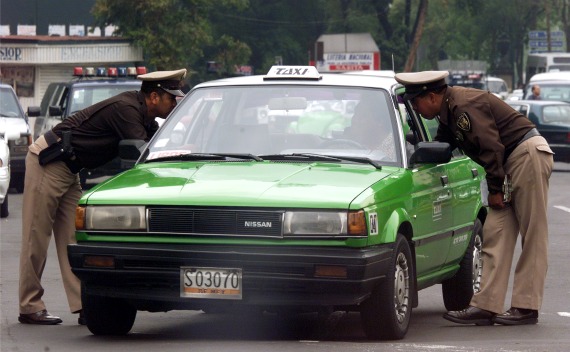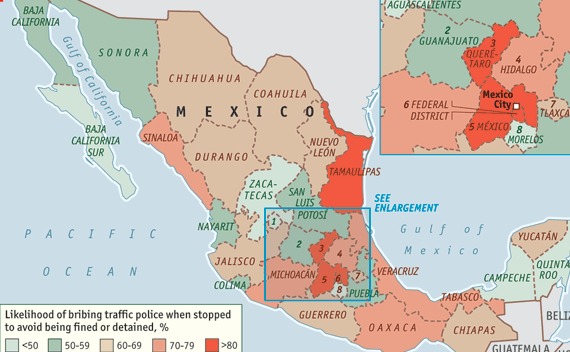Mexico’s Corrosive Corruption
More on:

Nearing Mexico City’s airport on my way to Oaxaca with my husband and brother-in-law a few years back, we had an all too familiar experience. Amid the crawling traffic were eight or ten police officers, systematically pulling over every third or fourth car. Unlucky in the lottery, we duly stopped, half in the road, half up a curb. Our offense was not using our blinker to signal a lane change, even though we hadn’t, of course, changed lanes. After the requisite license showing, some hemming and hawing about having to go to the station to sort things out, and a few long silences, we asked what our ticket would cost, and if we could pay it here. Now more animated, the officer pulled out his black notebook and quoted a price based on a multiple of the minimum wage. After finally working the amount down to roughly $40, we put the pesos into his small notebook and were on our way. Just a hundred yards on, at the next light waiting to make our turn, another policeman approached our car, knocking on the driver’s window. My husband, exasperated at this point, rolled it down a couple of inches and yelled “Ya pagamos!” (We already paid). To which the officer, ever polite, replied “Gracias – buen viaje!” and headed off to talk to the next driver in line.
A recent study by Transparency International shows that it wasn’t just our Texas plates that led to this ritual. In the capital, as well as the states of Mexico, Tamaulipas and Querétaro those stopped by the traffic police pay bribes over 80 percent of the time. While these represent the worst, the national average is just under 70 percent (in only four states is it less than half of the time).

Surveying 15,000 homes across Mexico, the report measures 35 different types of bribery and corruption, from those facing street vendors (23 percent of those surveyed paid a bribe), to people recovering stolen vehicles (25 percent), buying building permits (13 percent), requesting trash collection (22 percent). Perhaps more shocking, 15 percent of the respondents have paid to bring a case to court, while 9 percent speeded up hospital treatments with a financial incentive.
Overall, the data are sobering. Mexicans pay some $2.5 billion a year in bribes – no small change. These costs hit the poor the hardest – a regressive tax if ever there was one. While some federal programs - including the postal service and utilities - have been cleaned up; across the board the numbers aren’t improving. Compared to 2007, if anything things are getting worse, with the amounts charged rising ahead of inflation – today, the average fine is $14, up from $12 in 2007.
This reality makes life for many Mexicans more difficult. A big cut of their hard earned pesos goes to graft. But it also importantly makes the fight against insecurity and violence all the harder. If law enforcement officials often (if not almost always) prey on citizens in these smaller ways, how can the population trust them enough to work together on the bigger threats to their communities and country?
More on:
 Online Store
Online Store
